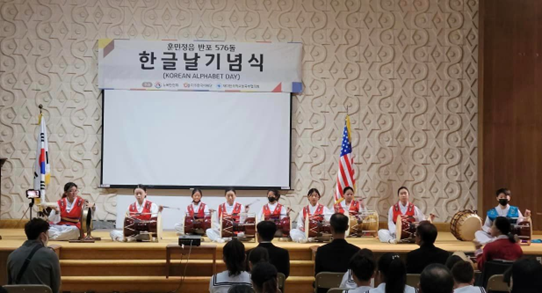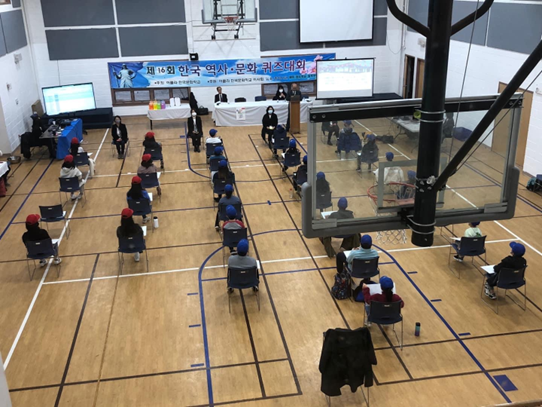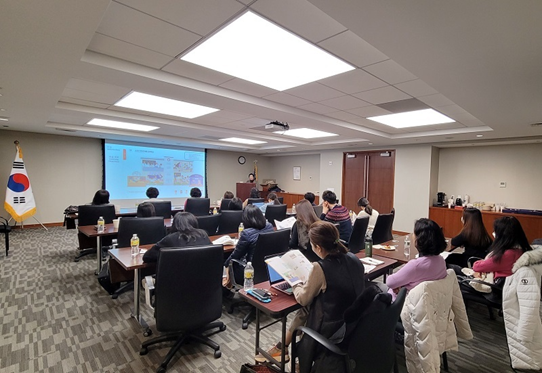Overseas Koreans Platform
- Main page
- Overseas Koreans Platform
- News Room
News Room
- Main page
- Overseas Koreans Platform
- News Room
- Country
- United States
- Date
- 2023.04.12
The history of Korean emigration to the U.S. is over 100 years now. The number of Korean Americans is huge when compared to the number of Koreans in other countries. Not only that, more schools and programs on Korean culture can be found in the U.S. than in other countries, and agencies and organizations that work behind these schools vary as well.
In the U.S., the northwestern region is referred to as the Tri-State area, which comprises three states—New York, New Jersey, and Connecticut—where almost 300,000 Korean Americans live. One of the members of the Overseas Korean Foundation is working in the Consulate General of the Republic of Korea in New York and manages Hangeul (Korean language) classes. Even the Republic of Korea Ministry of Foreign Affairs collaborates with other agencies to promote programs related to Korean classes. Not only governmental and public organizations but also private organizations, such as the National Association for Korean Schools Northeast Chapter, contribute to running and promoting Korean classes in the U.S.

Celebration of Hangeul Day in New York (Source: Korean Language Foundation)
There are three main types of Korean classes whether they are run formally or informally.
First, at the heart of most Korean classes are religious organizations. There is no doubt that religious organizations have served a huge role in consolidating Korean communities overseas. Especially, in the case of the U.S., most Korean schools or classes are run by churches. These programs open during weekdays or are done during church service on the weekends. Sometimes the instructors of these programs are professionals with official teacher certificates. However, many cases show that ordinary churchgoers spare their time to teach Korean in young children and children’s classes at church. These programs therefore have limitation in improving language skills since they are not professional Korean courses open every day in terms of efficiency in language learning. Instead, they are run along with various entertainment programs for children. Most students of this type of classes are also have the first-generation immigrants as their parents, which means they are exposed to the environment where they always have to speak Korean at home.
The second type is the ones opened, operated, and run by private organizations. These are either profit or non-profit organizations that establish education foundations to run Korean classes. Mostly, people who work at these foundations are instructors with official certificates in teaching Korean. Moreover, they also host various types of contests such as a Korean presentation contest, providing goal-oriented language educational curricula. Thanks to the financial support from the Korean and U.S. governments, these schools are managed even with low class fees. Still, they are in need for more governmental support. In addition, they are developing educational programs for Korean language instructors by having online/offline seminars.
The last type is Korean language schools that belong to Korean American associations. To elaborate, local Korean communities have Korean language schools or classes as one of their departments while they open various cultural events or programs. In case of non-profit associations, these schools are managed by monetary contribution from their own association members or by the subsidies from the Korean government.
 History & Culture Camp 2022 (Source: National Association for Korean Schools Northeast Chapter)
History & Culture Camp 2022 (Source: National Association for Korean Schools Northeast Chapter)
As elaborated in the beginning, there are many Korean students in the Northeast, especially in northern New Jersey. Up to 50% of the students are Korean. Due to this, there has been a movement for many Koreans to make the Korean language as an official subject for regular school curriculum. As a result, high schools in Palisades Park, a center of Koreatown in New Jersey, adopted Korean as their regular school subject. As an expansion of this movement, teaching Korean language should not be done outside of school only but introduced to official school curricula. The most realistic and certain approach to achieve this is to gain and enhance political power in American society. Thankfully, many of those who engage in Korean language education agree on this approach and thus dedicate themselves to build relationship with politicians to achieve this.
Korea is no longer a marginalized nation; instead, it is growing as a country with strong power in culture. To continue this momentum, all sectors—private, academic, local, and other related sectors—should collaborate each other and work together.

Korean language teacher training program by the Consulate General of the Republic of Korea in New York (Source: Consulate General of the Republic of Korea in New York)
It is certain that the interest in learning Korean is sweeping across the States even outside of Korean communities from local Korean Americans’ point of view. It is also sweeping in Europe, Central and South America, and other parts of the world. If everyone involved and responsible continues to do their work, as they have always been doing, and works together, it is obvious that the globalization of the Korean language is in the not-too-distant future.
